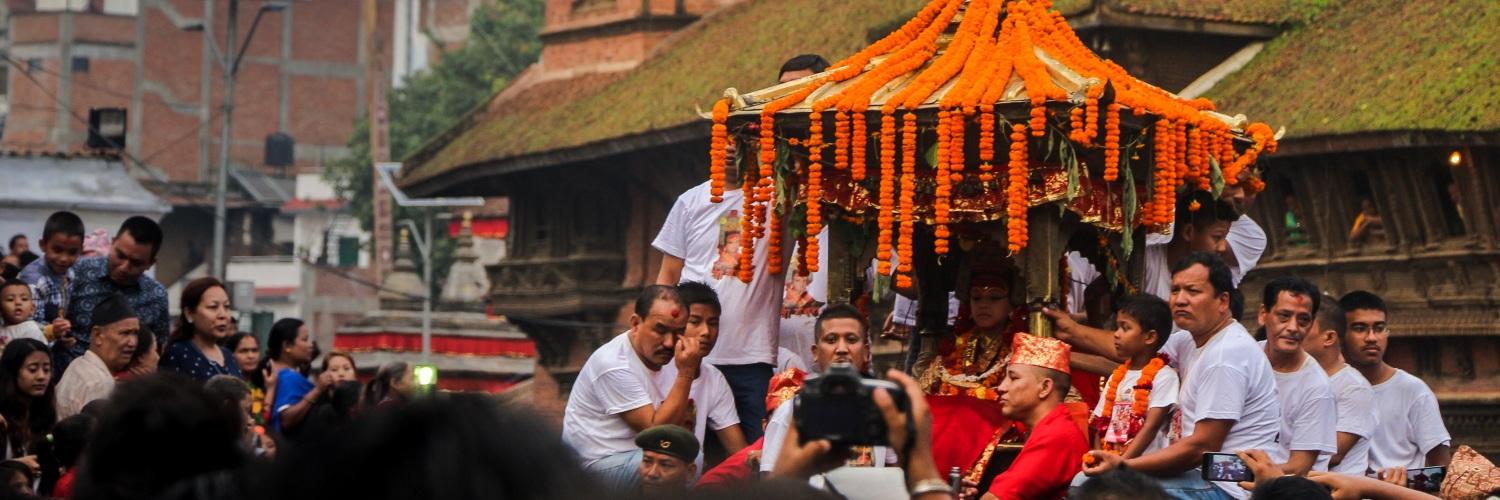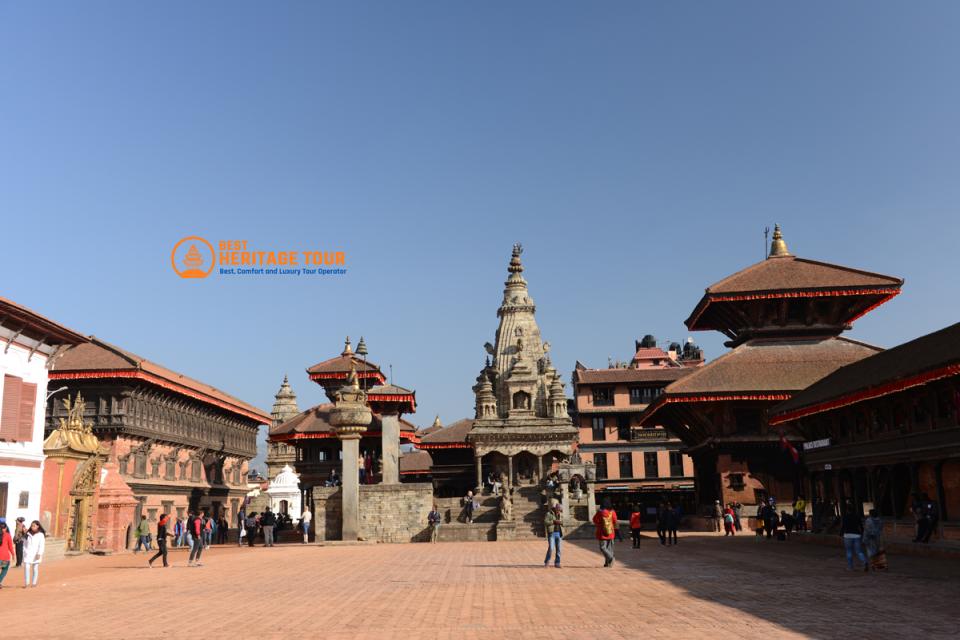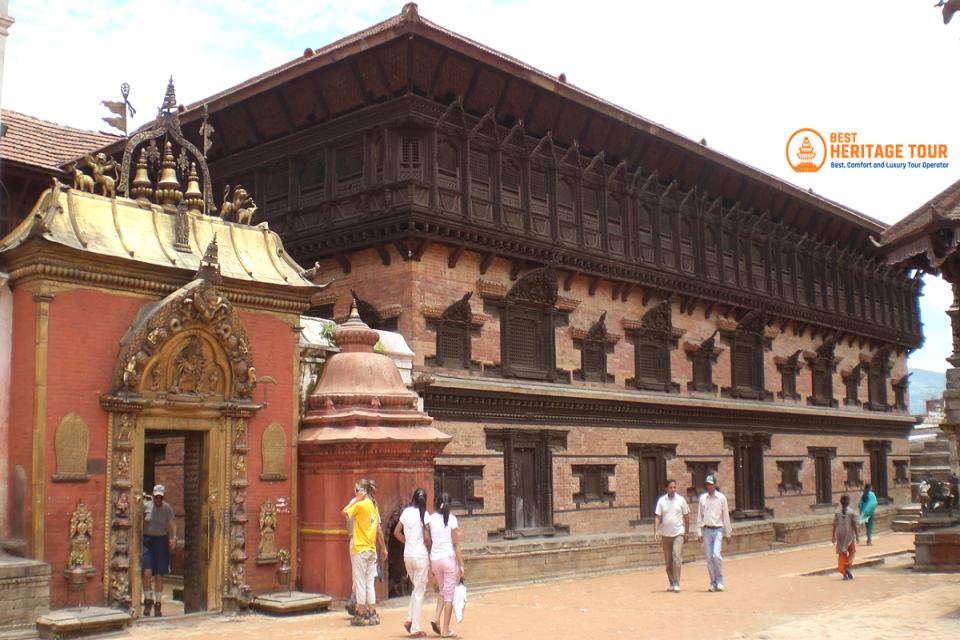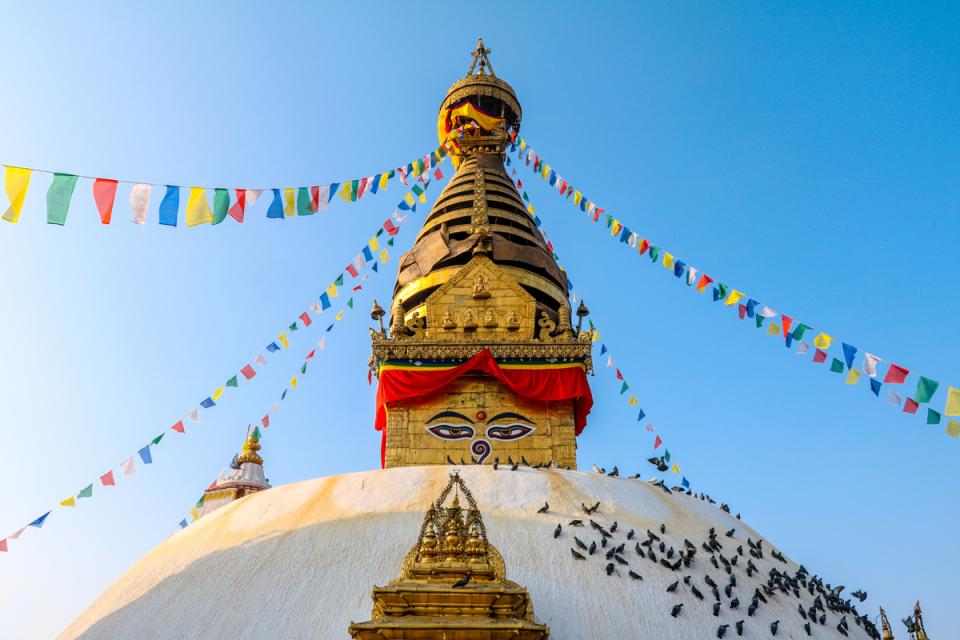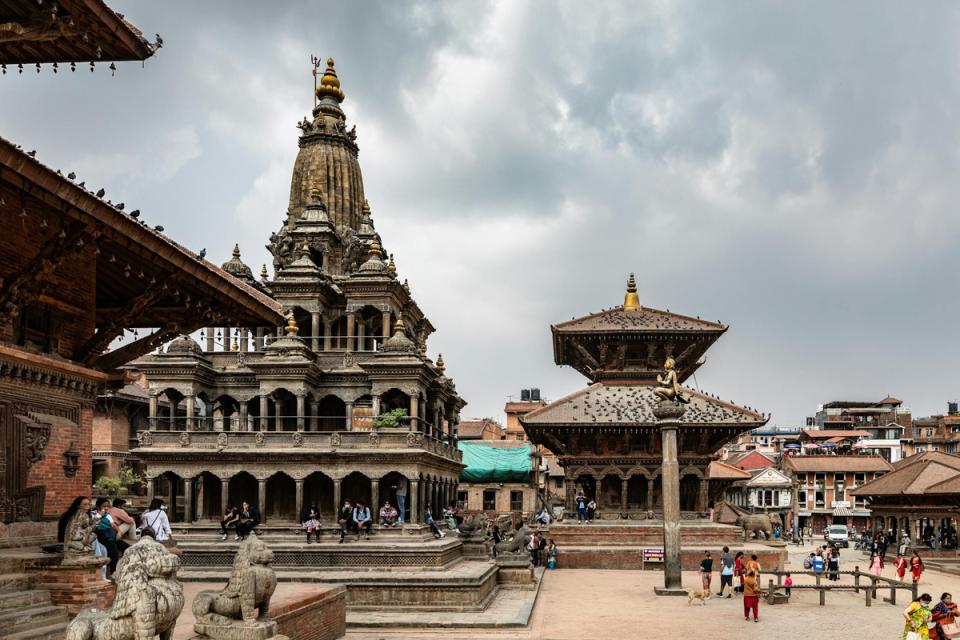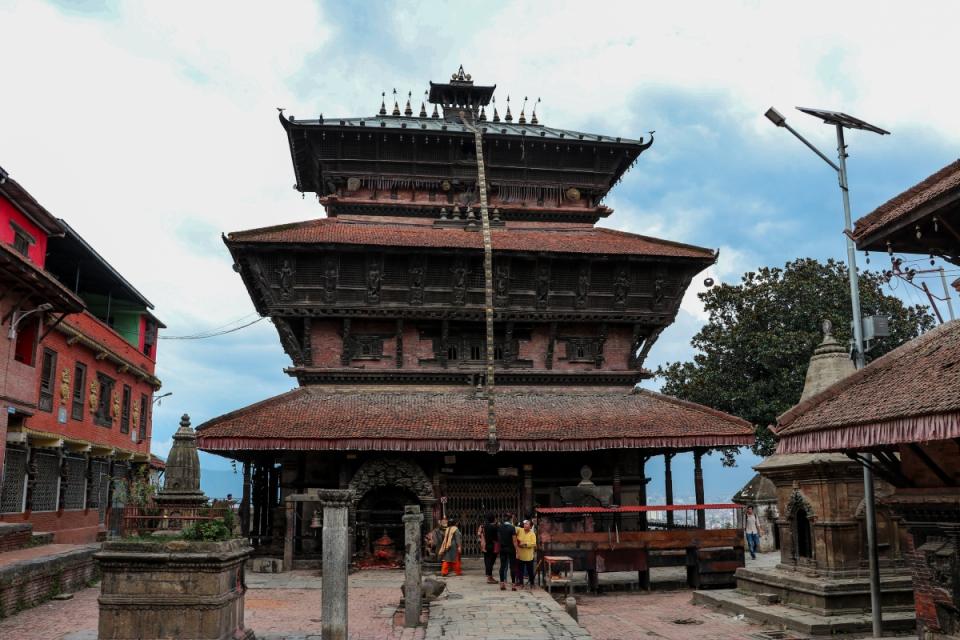Kathmandu, the heart of Nepal, isn't just the country's political and economic capital; it's also a treasure trove of ancient cultures and living traditions. Nowhere is this more visible than in the vibrant festivals of the Newar community. The Newars, the original inhabitants of the Kathmandu Valley, have preserved a rich cultural heritage through their elaborate festivals, known locally as “Jatras.” These festivals are more than just rituals; they are profound expressions of community identity, spirituality, and artistic expression.
In this comprehensive guide, we delve into the most iconic Newari festivals celebrated in Kathmandu, their dates, meanings, and customs, and how these time-honored events continue to shape the city's cultural rhythm. Whether you’re a traveler planning your visit or a cultural enthusiast seeking deeper insights, this article offers everything you need to understand the cultural significance of Newari celebrations.
Who Are the Newars?
The Newars are the indigenous people of the Kathmandu Valley, with a civilization that traces back thousands of years. Known for their craftsmanship, artistry, and religious tolerance, Newars have developed a unique syncretic culture blending Hindu and Buddhist traditions. Their festivals reflect this fusion, often combining gods and rituals from both religions in a seamless tapestry of devotion and celebration.
Newars have contributed significantly to Nepal’s history, economy, and culture. They were the original builders of Kathmandu’s UNESCO-listed Durbar Squares, chaityas (Buddhist shrines), and temples. Their festivals are living heritage, keeping ancient rituals, dances, and music alive in modern times.
Why Newari Festivals Are Culturally Important
Festivals in the Newar tradition are not isolated religious ceremonies. They are deeply interwoven with family life, community values, and the city’s spiritual ecosystem. Every festival has its own story, its own set of rituals, and its own meaning.
- Social Cohesion: These festivals bring entire neighborhoods together, strengthening family and community ties.
- Religious Devotion: Gods, goddesses, and ancestors are honored in grand public and private ceremonies.
- Art and Music Preservation: Traditional music like Dhime and dances like the Lakhey are passed down through generations through festivals.
- Economic Impact: Festival tourism plays a growing role in Kathmandu’s local economy, drawing thousands of domestic and international visitors.
Calendar and Timing: When Are Newari Festivals Celebrated?
Most Newari festivals follow the lunar calendar known as Nepal Sambat, established in 879 AD. This calendar determines the timing of major religious and cultural events and differs from the Gregorian calendar used globally.
- Many festivals fall between August and November, during the post-monsoon season, when the weather is pleasant and the skies are clear.
- Dates vary each year, so it’s essential to check a local Nepal Sambat festival calendar when planning a visit.
- Each neighborhood (called a Tole) may also celebrate the same festival on slightly different days, adding depth and variety to the experience.
Major Newari Festivals in Kathmandu
Kathmandu Valley is home to the Newar community, known for preserving Nepal’s oldest and richest cultural traditions. Their festivals blend Hindu-Buddhist rituals, colorful processions, sacred dances, and local feasts. Most take place in historic areas like Durbar Squares and ancient temples, offering travelers a deep cultural experience. Some of the most iconic Newari festivals include the following:
1. Indra Jatra (Yenya Punhi)
- When: Usually falls in Bhadra-Ashwin (usually September)
- Where: Predominantly in Kathmandu Durbar Square
- Nearby attractions:
- Kathmandu Durbar Square (UNESCO site): Main event hub with historical temples like Taleju Bhawani and Hanuman Dhoka
- Freak Street (Old hippie trail): Great for cafes and street photography
- Seto Machindranath Temple: Visited during processions
Indra Jatra is one of the most famous festivals in Kathmandu, celebrated to honor Lord Indra, the god of rain and the heavens. It lasts for eight days and includes chariot processions, mask dances, and the much-awaited appearance of the Kumari, Nepal’s Living Goddess.
Highlights:
- Kumari Jatra: The Living Goddess is paraded in a beautifully crafted chariot through the streets.
- Lakhey Dance: A masked demon-dance to ward off evil.
- Pulukishi Parade: A symbolic white elephant said to represent Indra’s mount searching for his master.
- Devotee Participation: Locals offer prayers, light butter lamps, and partake in communal feasts.
2. Biska Jatra
- When: Chaitra-Baisakh (Usually in April- Nepali New Year according to Bikram Sambat)
- Where: Bhaktapur and Thimi
- Nearby attractions:
- Bhaktapur Durbar Square: Center of festivities and home to the 55-Window Palace
- Taumadhi Square: Where the iconic Bhairab and Bhadrakali chariots are pulled
- Thimi: Famous for the color festival and pottery workshops
Although technically not aligned with Nepal Sambat, Biska Jatra is one of the most electrifying Newari festivals, especially in Bhaktapur. It marks the end of the old year and the beginning of the new.
Key Rituals:
- Chariot Tug-of-War: Locals engage in a dramatic tugging battle with large wooden chariots.
- Tongue Piercing Ceremony: In Bode, a volunteer pierces their tongue and walks through the city, a test of courage and faith.
- Color Festival in Thimi: Locals throw colored powder in a celebration resembling Holi.
3. Gai Jatra (Cow Festival)
- When: Bhadra (August)
- Where: Across all three cities in the valley
- Nearby attractions:
- Patan Durbar Square: Experience humorous local parades
- Naghal Tole & Asan Bazaar: Great for street food and observing spontaneous performances
- Garden of Dreams: A peaceful retreat nearby after the hustle of the festival
Gai Jatra, or the “Festival of Cows,” is a unique Newari tradition where families who lost loved ones in the past year lead a cow or a boy dressed as one in a public procession. The cow is believed to help the soul reach the afterlife.
Why It's Special:
- Humor and Satire: Participants often dress in humorous outfits, perform skits, and mock political or social issues.
- Honoring the Dead: Despite its comedic aspect, the core of the festival is deeply spiritual and healing.
- Street Performances: Music, dance, and spontaneous plays take over the city streets.
4. Yomari Punhi
- When: Mangsir (November-December)
- Significance: A post-harvest festival and the day dedicated to the sweet delicacy Yomari.
- Nearby attractions:
- Kirtipur: Traditional Newar town with beautiful old houses and local Yomari stalls
- Panga and Harisiddhi: Celebrate the harvest with local community rituals
Yomari, a steamed dumpling filled with jaggery and sesame seeds, symbolizes wealth and good fortune. The festival also honors the god of wisdom, Yamaraj.
Traditional Practices:
- Families gather to make and offer yomaris, especially to children.
- Farmers give thanks for a bountiful harvest.
- It’s also a community-sharing festival, where neighbors exchange food.
5. Mha Puja and Nepal Sambat (New Year)
- When: Kartik (coincides with Laxmi Puja in Tihar, usually October-November)
- Nearby attractions:
- Asan and Indrachowk markets: Lit up with oil lamps and filled with New Year sweets
- Itumbahal & Tundikhel: Host community gatherings and New Year parades
- Sankata Temple: One of the busiest temples during Nepal Sambat
Mha Puja is one of the most spiritually profound Newari festivals. Meaning “Worship of the Self,” it emphasizes self-purification and the celebration of one's existence.
Traditions Include:
- Mandala Creation: Colorful geometric designs are drawn for each family member.
- Offerings and Blessings: Participants are blessed with Tika, food, and symbolic gifts.
- The same evening marks the Nepal Sambat New Year, an important calendar event celebrated with parades and lights.
6. Sithi Nakha
- When: Jestha (May-June)
- Significance: Honoring Lord Kumar Kartikeya and the ritual cleaning of water sources.
- Nearby attractions:
- Sundhara and Maru Hiti: Ancient stone water spouts were cleaned during this time
- Bhimsensthan and surrounding areas in Patan: Participate in water worship rituals
- Nagbahal Pokhari: Known for environmental awareness events during Sithi Nakha
Sithi Nakha has both religious and environmental significance. It encourages locals to clean wells, ponds, and stone water spouts, ensuring a healthy water supply before the monsoon.
7. Gunla (Sacred Buddhist Month)
- When: Shrawan-Bhadra (August-September)
- A month-long Buddhist observance focused on pilgrimage, fasting, and traditional music.
- Nearby attractions:
- Swayambhunath (Monkey Temple): Pilgrimage hub during Gunla
- Kwa Bahal (Golden Temple in Patan): Hosts musical Gunla Baaja processions
- Itumbahal and Nyata Tole: Ideal for witnessing early-morning pilgrims
Newar Buddhists visit shrines like Swayambhunath and perform Gunla Baaja, a unique form of devotional music. Communities walk in groups, dressed in traditional attire, chanting and praying for peace and merit.
Unique Elements of Newari Festival Celebrations
1. Music and Dance
From the rhythmic Dhime drums to the ferocious Lakhey dance, Newari festivals are steeped in traditional music and symbolic movement. Each dance tells a story of gods, demons, or historical legends.
2. Ritual Food Culture
Food plays a central role in every celebration. Some must-try items include:
- Samay Baji: A ritual platter with beaten rice, boiled egg, bara, aila, and more.
- Chhoyela: Grilled, spiced meat, usually buffalo.
- Aila: Homemade rice liquor, often offered to deities and ancestors.
3. Traditional Attire and Decorations
Women wear the Haku Patasi (black sari with red border), while men don the Daura Suruwal. Festive homes are adorned with marigold garlands, oil lamps, and colorful mandalas.
How the Festivals Are Changing Over Time
While the core rituals remain intact, modernization has brought subtle changes:
- Younger generations may skip or adapt certain practices.
- Social media plays a role in promoting and reshaping how festivals are viewed.
- Urbanization challenges traditional space and resources.
- Still, many revival efforts are in place, festivals are being documented, promoted, and taught to ensure they endure.
Experiencing Newari Festivals as a Visitor
If you’re planning a visit to Kathmandu, timing it with a major Newari festival can make for an unforgettable experience.
Tips for Travelers:
- Check festival calendars in advance (dates vary each year).
- Respect local customs, dress modestly, and don’t interrupt rituals.
- Ask before taking photos, especially of sacred or private moments.
- Consider homestays or guided cultural tours for a deeper understanding.
Festivals and Tourism in Kathmandu Valley
Newari festivals are among the top cultural tourism attractions in Nepal. From travel photographers to spiritual seekers, they draw people from all over the world.
- Tourism boosts local economies by increasing sales of traditional crafts, food, and accommodations.
- UNESCO World Heritage Sites like Patan Durbar Square or Swayambhunath become vibrant hubs during festivals.
- However, over-commercialization remains a risk, and there’s an ongoing balance between authenticity and accessibility.
Sustainable Practices and Cultural Preservation
More communities are adopting eco-friendly approaches to festival celebration:
- Using biodegradable materials for decorations.
- Organizing neighborhood clean-up campaigns before and after festivals (like during Sithi Nakha).
- Promoting cultural education in schools to keep traditions alive.
NGOs and cultural organizations are also actively working to document and digitize Newari heritage for future generations.
Conclusion
The Newari festivals in Kathmandu offer more than colorful pageantry; they are living embodiments of centuries-old traditions that continue to shape the cultural identity of the valley. From the spiritually uplifting Mha Puja to the crowd-pulling drama of Indra Jatra, these festivals are a testament to the resilience, creativity, and devotion of the Newar people.
For locals, they are part of daily life. For visitors, they are a gateway into the soul of Nepal. If you ever find yourself wandering the ancient alleys of Kathmandu, let the sounds of drums, sights of marigolds, and aroma of home-cooked feasts draw you into a celebration that has stood the test of time.
Ready to experience the vibrant soul of Kathmandu through its legendary Newari festivals? From the sacred chariot processions of Indra Jatra to the heartfelt rituals of Mha Puja, immerse yourself in centuries-old traditions, authentic local cuisine, and stunning cultural performances. Whether you're a cultural explorer or a curious traveler, Best Heritage Tour offers guided festival experiences that connect you deeply with the living heritage of Nepal.
Plan your cultural journey today or contact us for more details:
-
Phone/WhatsApp/Viber: +9779851149197 / +9779810043046
-
Email: bestheritagetour@gmail.com / info@bestheritagetour.com
-
Website: www.bestheritagetour.com
-
Location: Thamel Marg, Kathmandu, Nepal
Author: Best Heritage Tour
Date: 17th June, 2025

